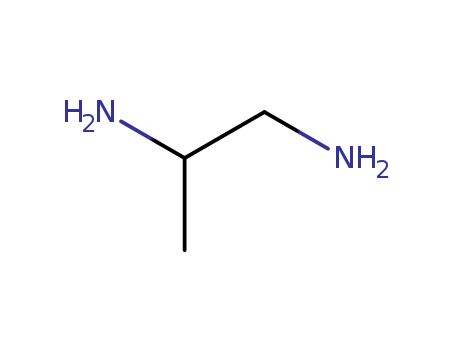- Chemical Name:1,2-Diaminopropane
- CAS No.:78-90-0
- Deprecated CAS:10424-38-1,68928-99-4
- Molecular Formula:C3H10N2
- Molecular Weight:74.1258
- Hs Code.:29212900
- European Community (EC) Number:201-155-9
- ICSC Number:0942
- NSC Number:175731
- UN Number:2258
- UNII:2A4P522UGO
- DSSTox Substance ID:DTXSID4021761
- Nikkaji Number:J4.225K
- Wikipedia:1,2-Diaminopropane
- Wikidata:Q161461
- Metabolomics Workbench ID:42223
- ChEMBL ID:CHEMBL1319459
- Mol file:78-90-0.mol
Synonyms:1,2-diaminopropane;1,2-diaminopropane acetate;1,2-diaminopropane diacetate;1,2-diaminopropane dihydrochloride, (R)-isomer;1,2-diaminopropane dihydrochloride, (S)-isomer;1,2-diaminopropane, (R)-isomer;1,2-diaminopropane, (S)-isomer



 C
C


